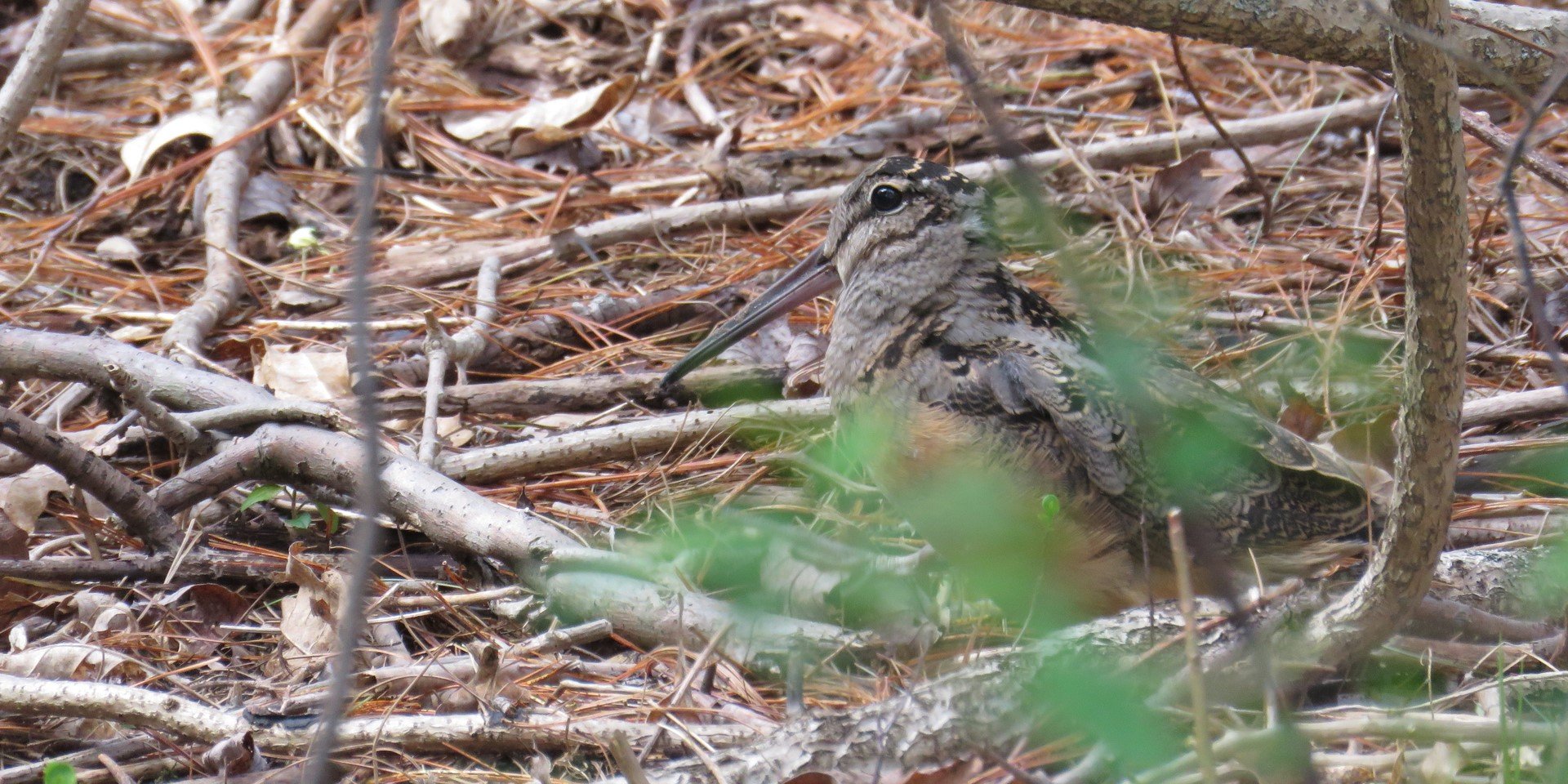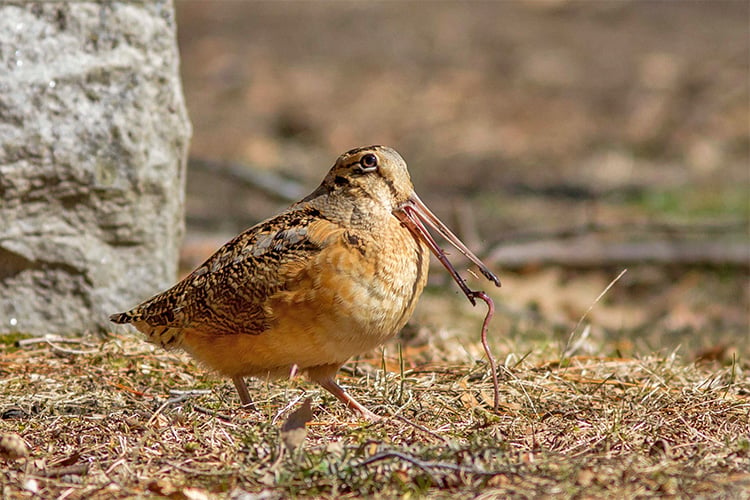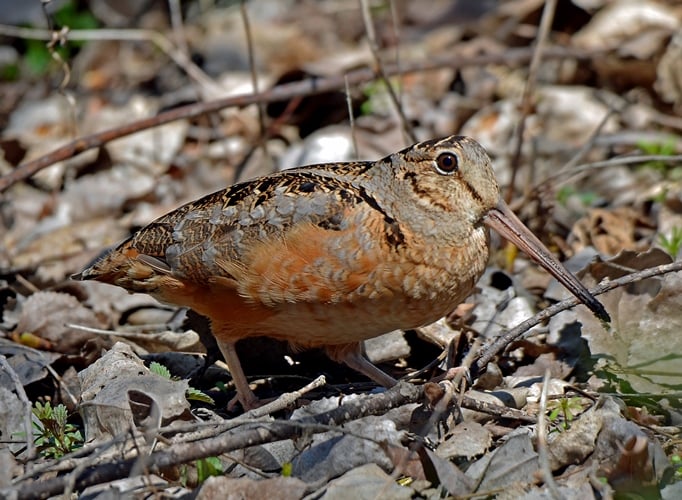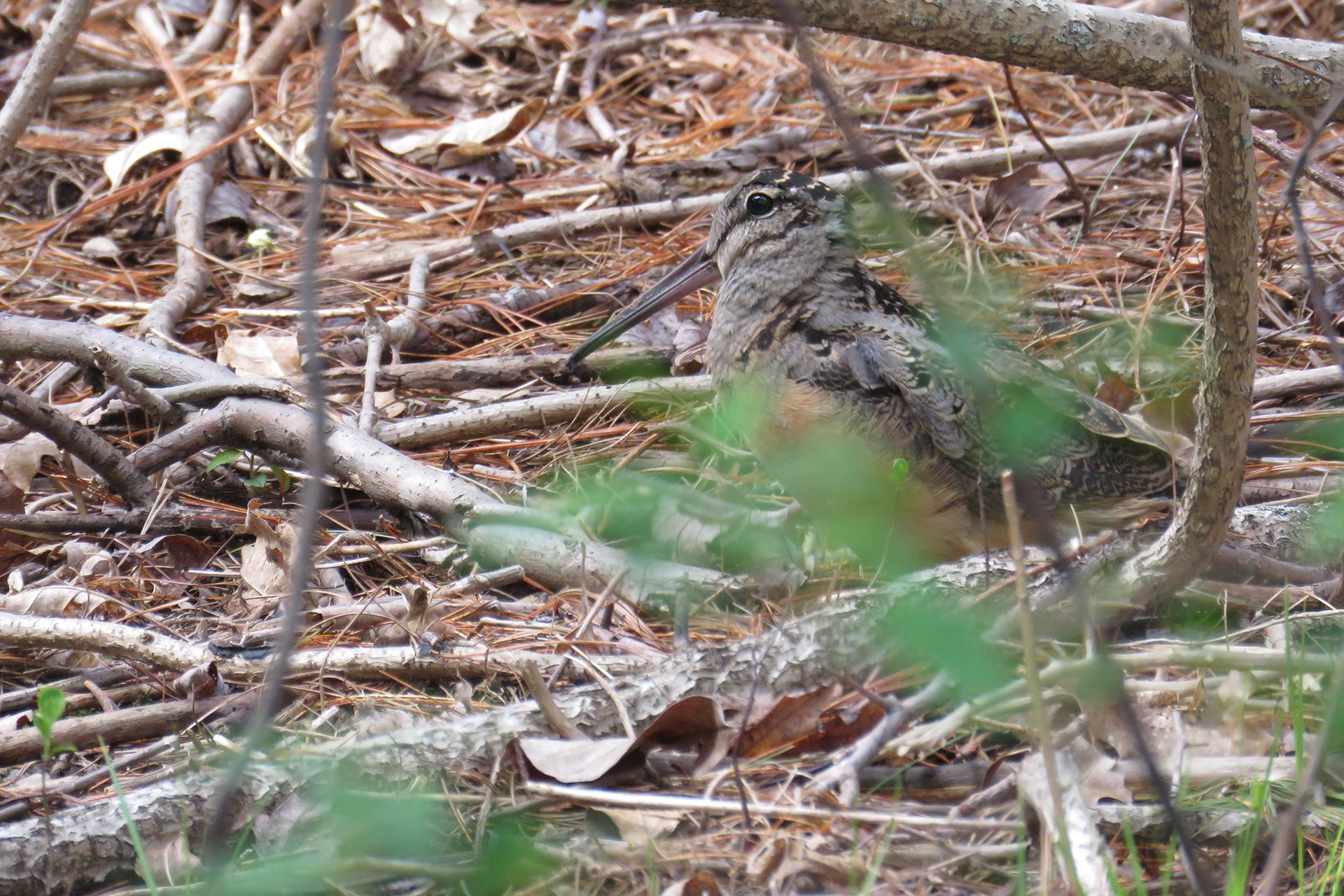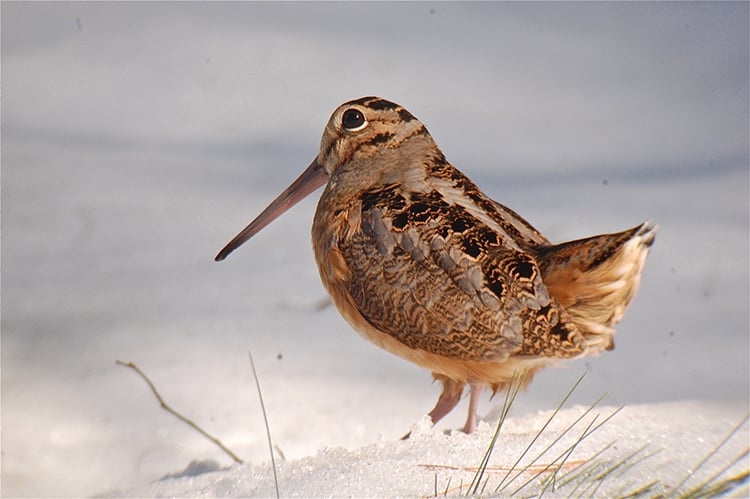American Woodcocks
American Woodcocks, also known as Timberdoodles (timber, for their woodland habitat, doodle because they look somewhat silly), can be found in the spring as they come to breed in New England.
While they are a member of the sandpiper family, they live in wooded habitats instead of the shore. Throughout the spring, they can be found at dusk performing their iconic aerial courtship display.
How to Identify American Woodcocks
American woodcocks are plump, medium-sized birds with a russet or brown color on the belly and lined with darker pattern on the back and wings. Their plumage allows them to stay well hidden in their wooded habitat. These birds have a long, flexible bill with far-set eyes to help stay alert for potential threats as they search for food.
American Woodcock Life Cycle
In the spring, American Woodcocks travel from the southeastern United States to New England for breeding. They spend their days nesting in forested areas and using their long beaks to find worms and insects in the mud. As dusk approaches, males move to a more open habitat to perform their iconic courtship display.
After mating, males play no role in nesting or incubation. Female woodcocks create a ground nest on forest floors or overgrown fields. Nests are made of dead leaves and other debris. The incubation period for the eggs is 20-22 days.
Chicks can leave the nest a few hours after hatching and can fly short distances by two weeks. After one month, chicks are almost fully grown and can fly long distances. The mother and chicks disband after 6-8 weeks.
American Woodcock’s Iconic Courtship Display
The male American woodcock’s dance begins on the ground, where he calls to females with a nasal peent, or piping sound. Males then soar to 200 or 300 feet before spiraling down while making high-pitched chirps and twitters in the sky. The iconic display is an early spring favorite spectacle for Massachusetts birdwatchers. Learn More
American Woodcock Sound
Where Can I See American Woodcocks?
You can find American Woodcocks in Massachusetts near shrubby forested lands while they migrate through in spring (March-May) and fall (October-November). Check Mass Audubon's program catalog for guided bird walks during their courtship period in early spring.
Threats Facing American Woodcocks
Loss of Breeding Grounds
Although American Woodcocks are not endangered or threatened, their breeding grounds are. Wooded and shrubby landscapes are impacted by human development and climate change.
A History of Over-Hunting
Once thriving and abundant when grasslands and wet forest edges were numerous in Massachusetts, woodcocks suffered a population crash when hunting reached its zenith in the late 1800s. American Woodcocks were easy to shoot, typically alighting and flying at close to shoulder height for the average shotgun-toting sportsman. A woodcock was even described to have clipped the ear of William Brewster as he walked a path on the Concord River with Edward Howe Forbush (Forbush 1925).
How Mass Audubon is Supporting Birds in Massachusetts
Mass Audubon works at our wildlife sanctuaries and beyond to ensure that the nature of Massachusetts continues to thrive. By scientifically monitoring Massachusetts birdlife, Mass Audubon informs important conservation decisions and launches targeted initiatives to help at-risk species. In addition, fostering healthy habitats, supporting native species, and educating people about the importance of nature conservation is critical to our success. Learn more about our work
Foresters for the Birds
As part of our Foresters for the Birds program, a project that assists landowners in enhancing bird habitats on wooded properties, Mass Audubon has created over 30 acres of protected habitat for the American Woodcock, at demonstration site in the Elm Hill Wildlife Sanctuary.
How You Can Support Birds in Massachusetts
Mass Audubon supports birds like the American Woodcock every day, but we couldn’t do it without the support of our 160,000+ members.
Help us support the American Woodcock, and birds like them, by becoming a member today.
Upcoming Programs About Woodcocks
See MoreWoodcock Walk at Fowl Meadows
-
Fowl Meadow, Burma Trail, Milton
-
Thursday, May 1
7:30-9:00pm
Adults
Avian Adventures: Spring Migration
-
Online
-
Thursday, May 22
7:00-8:30pm
Adults
Birder's Certificate Program - Online Lectures
-
Online
-
11 classes starting
Saturday, August 23
9:00am-1:00pm
Adults
Stay Connected
Don't miss a beat on all the ways you can get outdoors, celebrate nature, and get involved.



